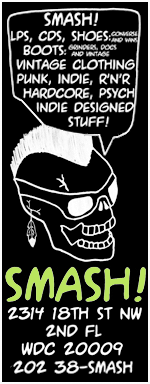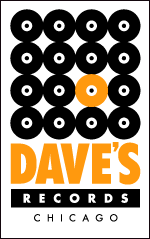
The BYG/Actuel experience was, to put it mildly, a dynamic mixture of personalities from across the spectrum of the late-‘60s jazz avant-garde. Well-seasoned vets crossed paths with energetic younger players and exchanged knowledge for enthusiasm in studios and on concert stages, sending free-jazz into the 1970s with a vibrant thrust of regenerative energy. One of the label’s finest efforts, New Africa, belongs to the great trombonist and composer Grachan Moncur III.
A big hunk of the heaviest-hitting Actuel recordings took place due to activities related to The Pan-African Music Festival in Algiers in July of ’69 and the subsequent Actuel Festival in Amougies, Belgium in October of the same year. BYG had been extant since ’67, but it was really this gush of furious collaboration, largely led by Archie Shepp and The Art Ensemble of Chicago, that shaped up sub-label Actuel’s roster and in turn delivered an absolutely vital chapter in jazz history.
There are of course exceptions. For instance, Paul Bley’s Ramblin’ was the result of a licensing deal, having been cut in Rome in ’66 (released in ’69), and while it is surely an important document, its relevance to the overall Actuel story is qualitative and not representative. The label’s lasting identity is based upon that roughly five month period demarked above, with Grachan Moncur III playing a key role as one of the scenario’s veterans, a trombonist as rich in his playing as he was compositionally brilliant.
Moncur is one of the few Actuel alums to have also recorded for Blue Note and Impulse. His work for those labels is persistently worthwhile, including his fruitful alliance with sax giant Jackie McLean and a pair of LPs as a leader (‘63’s Evolution and the next year’s Some Other Stuff) for Blue Note plus his long associations with Shepp and Marion Brown for Impulse.
A quick study of his background shows how he smartly hovered between the solid bedrock of the R&B and jazz mainstreams (touring with Ray Charles and Art Farmer along the way) and more progressive elements: the Blue Notes in particular are splendid examples of “inside/outside” playing, where advanced bop/modal jazz is taken to the edge of a new, fresh sound (Sam Rivers’ early credits and a few of Andrew Hill’s LPs provide additional models of Blue Note’s proclivity for the in/out sensibility).
And for Moncur, working with Shepp and Brown was a superb move into the heart of the New Thing since all three were influenced (if not slavishly devoted to) earlier and reliably bluesier trad forms. Along with McLean, Shepp is Moncur’s strongest musical partnership in terms of sheer productivity, and that relationship is what leads us to New Africa.
In contrast to avant-jazz at its most abstract, modality is front and center here, this structure allowing the music to glide with graceful intensity through the four movements of the album’s 17 and a half-minute titular suite. The moments of lung-force are abundant, but the vibe is certainly akin to Coltrane’s celebrated blend of urgency and calm. The sonic emphasis of “New Africa” is on a tough but gorgeous sprawl of warmly inspired soloing and savvy group interaction, all of it in service to the assured depth of the leader’s compositions.
No matter how nicely a piece reads on paper, it’ll only sound as good as those playing the tune. The prime weapon on New Africa is not Moncur but pianist Dave Burrell, a major if occasionally overlooked New Thing contributor who on this LP gets to lay down a massive extension of McCoy Tyner’s methodically captivating keyboard style, his playing a tense thread of rhythmic and melodic kinetics helping to inspire flights of substantial expressiveness from the horns.
Burrell has solo space aplenty, and in that context he shines as bright as anywhere else I’ve heard him, but on this recording his role is to lend beautiful, communicative cohesion. He supplies a mature sound, with his approach to one of jazz’s core instruments knowledgeable yet forward-thinking as it provides structural warmth and eschews simple support (at times his playing is also similar to Jaki Byard). Burrell is crucial here: both the rhythm section and the horns build upon and launch from his sublime handiwork.
Drummer Andrew Cyrille is most often lauded as a member of Cecil Taylor’s heavyweight groups, though he’s led his own sessions and worked as an educator. Cyrille’s as robust as any free drummer to make it to tape, though he’s not as loose as Sunny Murray or Milford Graves. He shares some of Graves’ assertiveness and snatches of his wide-open percussionist attack, but if I were to compare New Africa’s drummer with another player, it would probably be with fellow Shepp and Moncur associate Beaver Harris.
Those who know Harris are likely already familiar with Cyrille. Where his playing is loose and disobedient of strict timekeeper’s responsibilities (at least in any kind of explicit fashion), there is still recognizable forward motion, with delicious crispness upon the snare and cymbals, especially on “Space Spy” and the album’s closer “When.” There is ease in Cyrille’s playing, but nothing feels offhand; he’s always in the moment.
Alan Silva’s bass playing is a recurring theme in the history of free/avant affairs and in the BYG/Actuel discography his name is on some of the wildest material to ever hit the bins jazz or otherwise, with two entries under his leadership. And the fact that he played with both Taylor (on the Blue Note masterpieces Unit Structures and Conquistador!) and Albert Ayler (check out the Impulse monsters Live in Greenwich Village and Love Cry) is enough to insure his status as one of the best.
Silva’s known for forging rather esoteric paths (his ESP Disk Skillfulness, for example), but he resists muddying the power of the collective voice with needless grandstanding. And Silva’s general drive here falls solidly into post-Garrison mode, though unlike much of the bassist’s recorded work for Coltrane the human ear can actually detect his contribution. He weaves in and out of Cyrille’s agitated momentum and rubs up against Burrell’s rhythmic side with bold strokes of sturdy individualism, and on “Exploration” he’s remindful of his partner in freeform bass Henry Grimes.
In some ways the wildcard here is Roscoe Mitchell, a Windy City improviser noted for working with AACM cohorts Muhal Richard Abrams and Anthony Braxton and chiefly for his longstanding tenure in The Art Ensemble of Chicago. Alto sax and piccolo are his instruments on this session, and he melds his city/scene’s hotly collectivist style (more New Orleans, less post-Coleman Hawkins/Lester Young solo-centricity) into Moncur’s admirable objective.
Mitchell’s solos here appropriately push outward but are also striking for how well connected they remain to the stream of the music, staying in constant dialogue with the group instead of stepping outside it or above it. It’s simple really. Mitchell has nothing to prove, with the vitality of his creative personality consistently elevating the whole. His debut was titled Sound; it paints an accurate portrait of Mitchell’s improvisational strategy and underscores his integral participation in this unit’s unflagging pulse.
Burrell is the key, but Moncur is the lock. His writing is drenched in tradition yet is still alive in this young century, as is his playing on an instrument that became less common in jazz as the landscape increased its movements toward fluidity and abstraction. Alongside frequent Shepp band member Roswell Rudd, Moncur sits at the top of the heap of the USA’s ‘60s free-bonesmen.
His playing is never blustery, and when his tone is ragged it’s obvious this quality is deliberate and not the result of any lapse of control. The guy is an absolute fountain of tonal dexterity and a consummate catalyst of sustained jaunts in group imagination. It’s a sad reality that Moncur’s frequency of output takes a steep decline post-BYG. But don’t let’s linger too long on the spilt milk of record label knuckleheadism; it’s ultimately much healthier to champion the successes, those fully realized works that add such a fine nook to the vast labyrinth of (post)modern jazz.
Oh, just a minute. In walked Archie. Yeah, he’s here, throwing down his typically raucous lung purge as a guest on “When.” Expertly weaving around both Mitchell and Moncur’s playing as he delivers gutsy blasts of bluesy shrapnel, he assists in bringing New Africa to a stirring conclusion. And Shepp’s appearance is testament to where jazz was heading in this expansive period.
After the death of Coltrane there was span of uncertainty as jazz headed into a new decade. But underneath the last-gasp commerciality of certain strains of Fusion stood a strong underground of musicians focused upon refining the avant-garde into a constantly evolving and maturing movement. All of New Africa’s contributors were large factors in this development, and the album sits proudly at the end of one era as it points to a new road.
This LP sprang from the endless luminescence of late-Coltrane and helped to signal the way ahead. Soon to come was the no-nonsense playing for the sheer hell of it that derived in part from Sam Rivers’ Studio Rivbea and also the copious loft-jazz goodness Douglas Records compiled on their three outstanding Wildflowers volumes.
Other Actuel releases register differently, some like declarations of fiery tribute (Frank Wright’s One for John, Sunny Murray’s Hommage to Africa, Shepp’s Yasmina, a Black Woman), others as valuable statements from undersung figures (Kenneth Terroade’s Love Rejoice, Arthur Jones’ Africanasia, Clifford Thornton’s Ketchaoua), and a few as installments in discographies long and distinguished (Steve Lacy’s Moon, Anthony Braxton’s B-Xo/N-0-1-47a, Bley’s Ramblin’). But New Africa is a conduit. And its channels are still quite active.
GRADED ON A CURVE:
A













































